Targeting AURKA with multifunctional nanoparticles in CRPC therapy
- PMID: 39734237
- PMCID: PMC11684087
- DOI: 10.1186/s12951-024-03070-7
Targeting AURKA with multifunctional nanoparticles in CRPC therapy
Abstract
Castration-resistant prostate cancer (CRPC) presents significant therapeutic challenges due to its aggressive nature and poor prognosis. Targeting Aurora-A kinase (AURKA) has shown promise in cancer treatment. This study investigates the efficacy of ART-T cell membrane-encapsulated AMS@AD (CM-AMS@AD) nanoparticles (NPs) in a photothermal-chemotherapy-immunotherapy combination for CRPC. Bioinformatics analysis of the Cancer Genome Atlas-prostate adenocarcinoma (TCGA-PRAD) dataset revealed overexpression of AURKA in PCa, correlating with poor clinical outcomes. Single-cell RNA sequencing data from the GEO database showed a significant reduction in immune cells in CRPC. Experimentally, T cell membrane-biomimetic NPs loaded with the AURKA inhibitor Alisertib and chemotherapy drug DTX were synthesized and characterized by dynamic light scattering and transmission electron microscopy, showing good stability and uniformity (average diameter: 158 nm). In vitro studies demonstrated that these NPs inhibited CRPC cell proliferation, increased the G2/M cell population, and elevated apoptosis, confirmed by γH2AX expression. In vivo, CM-AMS@AD NPs accumulated in tumor tissues, significantly slowed tumor growth, decreased proliferation, increased apoptosis, and improved the immune environment, enhancing dendritic cell (DC) maturation and increasing CD8 + /CD4 + ratios. These findings suggest that CM-AMS@AD NPs offer a promising triple-combination therapy for CRPC, integrating photothermal, chemotherapy, and immunotherapy, with significant potential for future clinical applications.
Keywords: Aurora-A kinase (AURKA); Castration-resistant prostate cancer (CRPC); Chemotherapy; Immunotherapy; Nanoparticles; Photothermal therapy.
© 2024. The Author(s).
Conflict of interest statement
Declarations. Ethics approval and consent to participate: Study protocols were approved by the Ethics Committee of Ganzhou Hospital-Nanfang Hospital (Grant No.ZKY2023-107) and based on the ethical principles of the Declaration of Helsinki. The animal experiments were performed strictly per the guidelines in the Guide for the Care and Use of Laboratory Animals. The protocol of animal experiments was ratified by the Institutional Animal Care and Use Committee of Ganzhou Hospital-Nanfang Hospital (Grant No.DKY2023-019). Competing interests: The authors declare no competing interests.
Figures

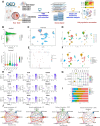
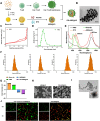
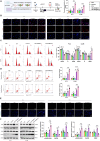

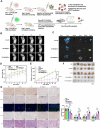
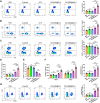
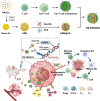
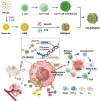
Similar articles
-
Alisertib, an Aurora kinase A inhibitor, induces apoptosis and autophagy but inhibits epithelial to mesenchymal transition in human epithelial ovarian cancer cells.Drug Des Devel Ther. 2015 Jan 9;9:425-64. doi: 10.2147/DDDT.S74062. eCollection 2015. Drug Des Devel Ther. 2015. PMID: 25624750 Free PMC article.
-
CCNB1 and AURKA are critical genes for prostate cancer progression and castration-resistant prostate cancer resistant to vinblastine.Front Endocrinol (Lausanne). 2022 Dec 19;13:1106175. doi: 10.3389/fendo.2022.1106175. eCollection 2022. Front Endocrinol (Lausanne). 2022. PMID: 36601001 Free PMC article.
-
Inhibition of mitotic Aurora kinase A by alisertib induces apoptosis and autophagy of human gastric cancer AGS and NCI-N78 cells.Drug Des Devel Ther. 2015 Jan 14;9:487-508. doi: 10.2147/DDDT.S74127. eCollection 2015. Drug Des Devel Ther. 2015. PMID: 25609923 Free PMC article.
-
Self-assembled albumin nanoparticles for combination therapy in prostate cancer.Int J Nanomedicine. 2017 Oct 24;12:7777-7787. doi: 10.2147/IJN.S144634. eCollection 2017. Int J Nanomedicine. 2017. PMID: 29123392 Free PMC article.
-
An update on the pharmacokinetics and pharmacodynamics of alisertib, a selective Aurora kinase A inhibitor.Clin Exp Pharmacol Physiol. 2016 Jun;43(6):585-601. doi: 10.1111/1440-1681.12571. Clin Exp Pharmacol Physiol. 2016. PMID: 26999067 Review.
References
-
- Liu Z, Zhu X, Xu C, Min F, Yu G, Chen C. Ulinastatin ameliorates the malignant progression of prostate cancer cells by blocking the RhoA/ROCK/NLRP3 pathway. Drug Dev Res. 2023;84(1):36–44. 10.1002/ddr.22010. - PubMed
-
- Oprea-Lager DE, MacLennan S, Bjartell A, et al. European Association of Nuclear Medicine Focus 5: consensus on molecular imaging and theranostics in prostate cancer. Eur Urol. 2024;85(1):49–60. 10.1016/j.eururo.2023.09.003. - PubMed
MeSH terms
Substances
Grants and funding
- 82360598/the National Natural Science Foundation of China
- WHWJ2023y002/the Wuhu Municipal Health Committee, Anhui, China
- 2024AH051878/the Higher Education Scientific Research Project of Anhui Province, China
- 202204295107020011/the Anhui Provincial Clinical Medicine Research Transformation Special Fund
LinkOut - more resources
Full Text Sources
Research Materials
Miscellaneous

